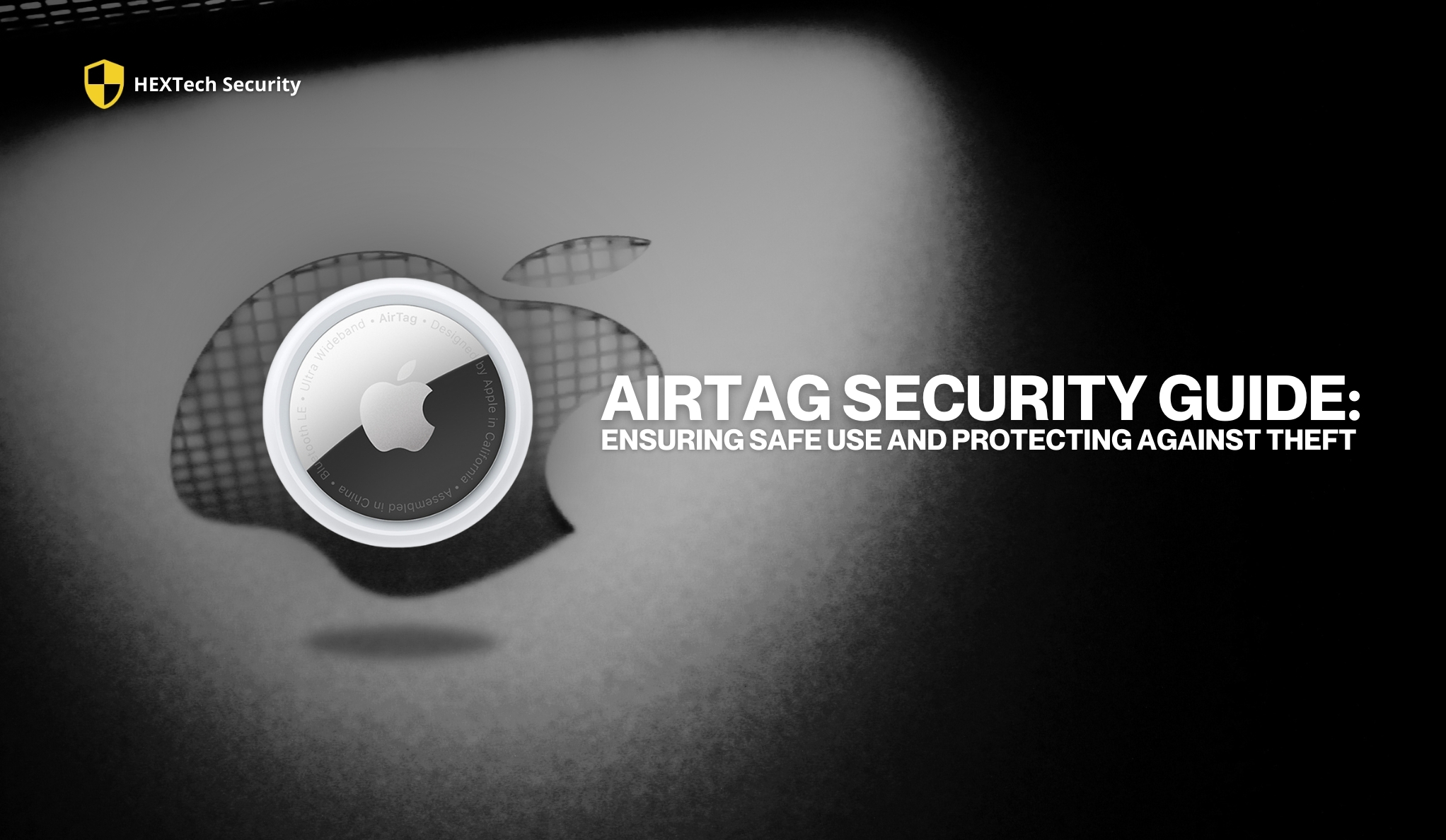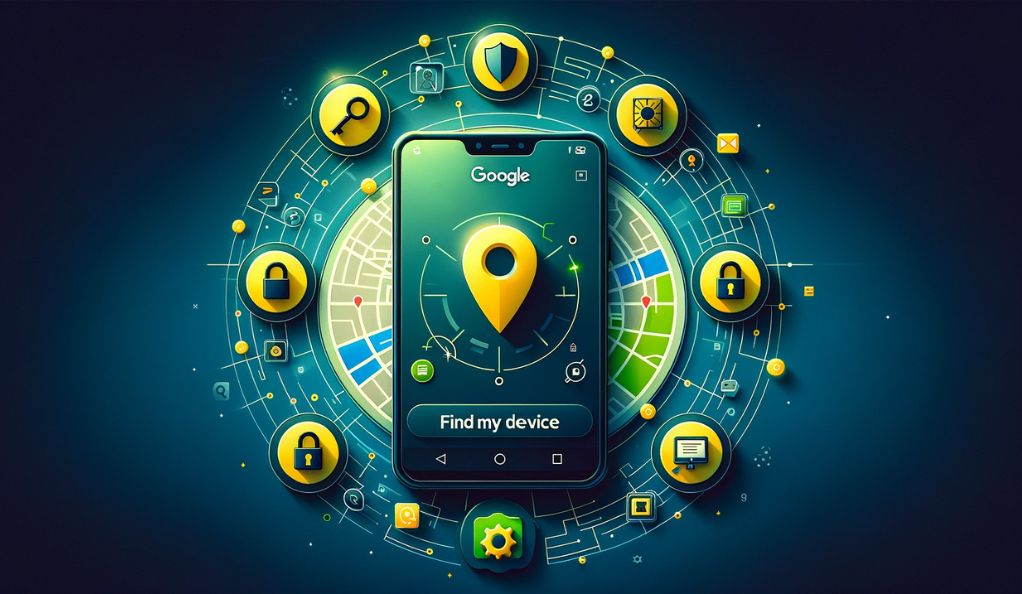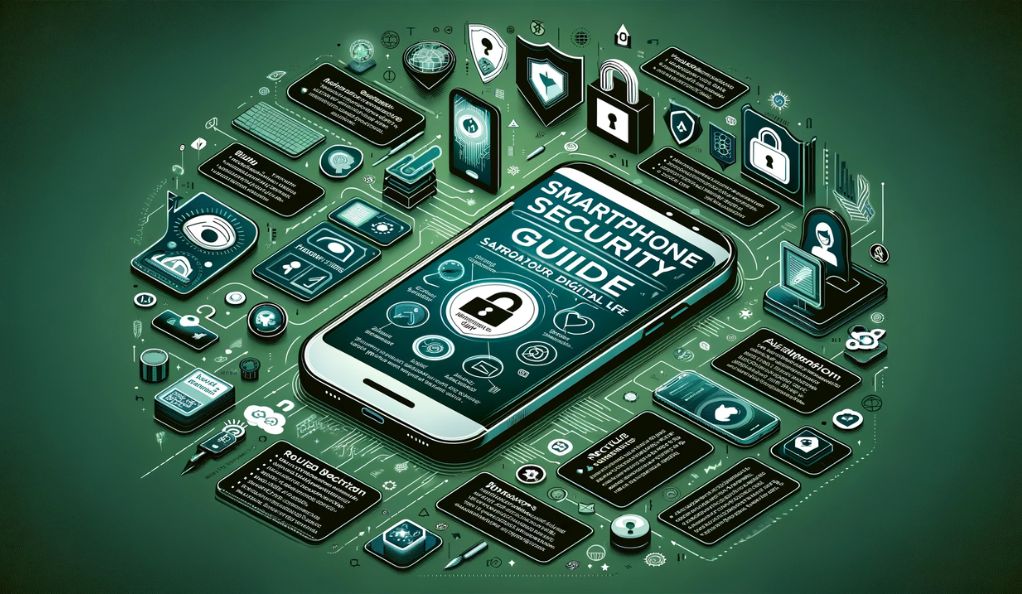In an era where technology seamlessly blends with daily life, Apple’s AirTag emerges as a beacon of innovation for tracking and securing personal belongings. However, with great technology comes the responsibility of understanding its implications on security and privacy. This guide delves into the world of AirTags, exploring their use for safeguarding items, potential risks, and measures to prevent misuse.
Understanding AirTag and Its Security Features
In the realm of personal item tracking, Apple’s AirTag has emerged as a groundbreaking tool. This compact device, resembling a small coin, is designed with the primary goal of helping individuals keep track of their belongings. To fully appreciate the capabilities and security aspects of AirTag, it’s essential to delve into its operational mechanics and the embedded security features that set it apart.
How AirTag Works
At its core, the AirTag utilizes Apple’s expansive Find My network, which harnesses the power of nearly a billion Apple devices in use worldwide. When an AirTag is attached to an item, it emits a secure Bluetooth signal that can be detected by nearby devices in the network. These devices then relay the location of the AirTag to iCloud, allowing the owner to view its last known location through the Find My app on their iPhone, iPad, or Mac.
What makes AirTag particularly innovative is its precision finding capability, which employs Ultra-Wideband technology in the latest Apple devices. This technology enables users to more accurately determine the distance and direction to their AirTag within a short range, making it easier to locate items in close proximity.
Built-in Security Features
Understanding the potential privacy concerns inherent in a tracking device, Apple has integrated several key security features into AirTag:
- End-to-End Encryption: The communication between AirTag and the Find My network is encrypted end-to-end. This means that location data is kept private and secure, not even Apple can access the location of your AirTag.
- Rotating Bluetooth Identifiers: To prevent unwanted tracking, AirTag’s Bluetooth identifiers frequently change. This feature ensures that no one can use the Bluetooth signal to track the owner’s movements.
- Lost Mode and Privacy Alerts: If an AirTag is separated from its owner and marked as lost, it can be set to display a custom message with contact information when scanned by an NFC-capable device. Additionally, if an AirTag is detected moving with someone for an extended period of time, it will automatically emit a sound to alert them, addressing concerns of unwanted tracking.
- User Anonymity in the Find My Network: The interactions with the Find My network are anonymous and do not include any user-identifiable information. This anonymity is a critical aspect of the AirTag’s design, ensuring that the privacy of both the tracker and the individuals around it is maintained.
The AirTag is a testament to Apple’s commitment to blending innovative technology with robust security measures. By understanding how AirTags work and the security features they offer, users can confidently employ these devices to keep track of their belongings, while being assured of their privacy and safety.
Using AirTag to Secure Your Belongings
In a world where misplacing personal items can be a frequent and frustrating experience, Apple’s AirTag offers a smart solution. This section provides a detailed, step-by-step guide on how to use AirTag to secure your belongings, ensuring that your valued items are always within reach or trackable.
Step 1: Setting Up Your AirTag
- Unbox and Activate: Begin by removing the AirTag from its packaging. Pull out the tab to activate the battery. You’ll hear a sound indicating that the AirTag is on and ready for pairing.
- Pair with Your Apple Device: Bring the AirTag close to your iPhone or iPad. Your device will recognize the AirTag and prompt you with a connection request. Tap ‘Connect’ to initiate the pairing process.
- Assign a Name: Choose a name for your AirTag from the list of suggestions or create a custom name. This step is crucial for identifying the specific item the AirTag is attached to, especially if you plan to use multiple AirTags.
- Finalize Setup: Follow the on-screen instructions to complete the setup. Your AirTag will now appear in the ‘Items’ tab of the Find My app.
Step 2: Attaching AirTag to Your Items
- Select an Item: Choose an item that you want to track. Common choices include keys, wallets, backpacks, or even pets’ collars.
- Secure Attachment: Attach the AirTag securely to your chosen item. You might need an AirTag accessory like a key ring, loop, or holder, depending on what you’re attaching it to. Ensure that the AirTag is fastened well to prevent it from falling off.
Step 3: Tracking Your Item
- Locate via Find My App: To find the location of your item, open the Find My app on your Apple device. Go to the ‘Items’ tab, and select your AirTag. You’ll see the item’s last known location on a map.
- Use Precision Finding: If you’re close to the item, use Precision Finding (available on iPhone 11 and later models). This feature provides on-screen directions and haptic feedback to guide you to your AirTag.
- Play a Sound: If your item is nearby but not visible, you can make the AirTag play a sound to help locate it. This is particularly useful for finding items lost in cluttered or hard-to-reach places.
Step 4: Managing Your AirTag
- Battery Check and Replacement: Regularly check the battery status of your AirTag in the Find My app. AirTag batteries typically last over a year and are user-replaceable.
- Lost Mode: If your item is lost, you can enable Lost Mode in the Find My app. This will notify you when the AirTag is detected by the network and allow you to leave a message and contact number for anyone who finds it.
- Privacy and Safety Checks: Regularly ensure that your AirTag is securely attached to your item and not being used to track someone without their consent.
By following these steps, you can effectively use AirTag to keep track of your personal belongings, adding a layer of security and peace of mind to your daily life. The AirTag, with its user-friendly interface and robust tracking capabilities, is a testament to how technology can simplify and secure our personal world.
The Dark Side: How Thieves Misuse AirTag

While AirTag is designed as a tool for convenience and security, it’s important to acknowledge and understand its potential for misuse. In this section, we explore how AirTag can be exploited by thieves and the implications of such misuse, providing a comprehensive insight into the darker side of this technology.
Understanding the Misuse
The compact size and precise tracking capabilities of AirTag, while beneficial for locating lost items, can also be manipulated for nefarious purposes. Thieves have found ways to use AirTags for tracking high-value targets, such as vehicles or expensive equipment, without the owner’s knowledge.
Common Methods of Misuse
- Vehicle Tracking: One of the most reported misuses involves thieves placing an AirTag on a car, often in a hidden spot where it’s difficult to find. They track the vehicle to the owner’s home or a secluded area, where they attempt to steal it.
- Targeting Personal Belongings: In crowded places, thieves might slip an AirTag into the pocket or bag of an individual with high-value belongings. This allows them to track and steal the items later.
- Stalking and Harassment: There have been instances where AirTags are used for stalking or harassment. An AirTag is secretly placed on the victim’s belongings, giving the perpetrator the ability to track their movements.
The Implications of Misuse
The misuse of AirTag raises significant privacy and security concerns. It demonstrates how technology, no matter how well-intentioned, can be twisted for harmful purposes. This misuse not only invades privacy but also poses a threat to personal safety.
Apple’s Response and Safety Measures
In response to these concerns, Apple has implemented safety measures:
- Alerts for Unknown AirTags: iOS devices can detect if an unknown AirTag is moving with them and alert the user.
- Audible Alarms: An AirTag separated from its owner for an extended period will emit a sound to alert nearby people.
- Serial Number Tracking: Each AirTag has a unique serial number, and if found being used for stalking, it can be traced back to the original purchaser through Apple.
Understanding the potential for misuse is crucial for AirTag users. While Apple has taken steps to mitigate these risks, awareness and vigilance remain key. Users should be aware of their surroundings and regularly check for unknown devices, ensuring their safety and privacy in the face of this new technology.
Protecting Yourself When Using AirTag
As the adoption of AirTag technology grows, it’s crucial for users to be aware of how to protect themselves from potential privacy invasions and misuse. This section provides essential guidance on safeguarding your privacy and security while using AirTag.
1. Stay Alert for Notifications
- Understanding AirTag Alerts: If you have an iPhone running iOS 14.5 or later, it can detect an AirTag that isn’t with its owner and is moving with you over time. If this happens, your iPhone will alert you with a notification.
- Action Steps: Upon receiving an alert, take it seriously. Investigate your belongings to locate the unknown AirTag. The notification will offer instructions on how to disable the AirTag if it’s found.
2. Regularly Check Your Belongings
- Manual Checks: Even if you haven’t received an alert, it’s a good practice to periodically check your personal items, especially after being in public spaces or crowded areas.
- What to Look For: Be on the lookout for any unfamiliar small, disc-shaped devices attached to your belongings.
3. How to Disable an Unauthorized AirTag
- Locating the AirTag: If you find an AirTag that doesn’t belong to you, use your iPhone or any NFC-capable smartphone to tap the white side of the AirTag. This will bring up a notification with information about the AirTag.
- Disabling the AirTag: To disable the AirTag, remove its battery. Twist the back of the AirTag counterclockwise to open it and remove the battery. This will stop the AirTag from transmitting its location.
4. Understanding the Sounds
- AirTag Sounds: If an AirTag is separated from its owner and with you for a certain period, it will start to make a sound to alert you of its presence.
- Responding to Sounds: If you hear an unexpected chirping or beeping, look for an AirTag hidden in your surroundings.
5. Privacy Best Practices
- Stay Informed: Keep your iOS updated to ensure you have the latest security and privacy features from Apple.
- Educate Yourself: Familiarize yourself with how AirTag and the Find My network operate. Understanding the technology can help you better manage your privacy.
Using AirTag comes with the responsibility of safeguarding your privacy. By staying vigilant, regularly checking your belongings, understanding how to respond to alerts, and disabling unauthorized AirTags, you can enjoy the benefits of this technology while protecting yourself against potential misuse.
Preventing the Misuse of Your AirTag
As AirTag owners, it is our responsibility to ensure that this powerful tool is used ethically and legally. This section focuses on guiding AirTag users on how to prevent the misuse of their devices, thereby upholding privacy and ethical standards.
1. Ethical Usage of AirTag
- Respect Privacy: Always use AirTags to track your own belongings and never use them to track people without their explicit consent. This includes avoiding the use of AirTags to monitor children or employees without their knowledge and agreement.
- Awareness of Legal Implications: Be aware that using AirTags to track individuals without consent can have legal ramifications and is considered a violation of privacy laws in many jurisdictions.
2. Secure Your AirTag
- Attachment and Visibility: Ensure that your AirTag is securely attached to your item and is visible if possible. This reduces the risk of it being mistaken for an unauthorized tracking device.
- Regular Checks: Periodically check that your AirTag is still in place and has not been tampered with or moved.
3. Responding to Misplaced AirTags
- If You Lose an AirTag: If you misplace an AirTag or it becomes detached from your item, use the Find My app to locate it as soon as possible. If it’s in an unknown location, consider deactivating it remotely to prevent accidental tracking.
- Handling Found AirTags: If someone contacts you about a found AirTag, respond promptly and responsibly. Retrieve it or deactivate it to prevent concerns about unintended tracking.
4. Educating Others About AirTag
- Informing Family and Friends: If you’re using an AirTag on shared items, like a family car or a pet’s collar, inform your family members or friends about its presence and purpose.
- Raising Awareness: Educate others about the functionality of AirTags, including their security features and the importance of ethical usage.
5. Staying Updated with AirTag Developments
- Software Updates: Regularly update your AirTag and iOS to ensure you have the latest security features and improvements.
- Following News and Updates: Stay informed about any new developments or updates from Apple regarding AirTag usage and security features.
Preventing the misuse of your AirTag is crucial for maintaining ethical standards and respecting the privacy of others. By using AirTags responsibly, securing them properly, and staying informed about legal and technological updates, you can ensure that this innovative tool serves its intended purpose without infringing on others’ privacy.
Conclusion
The advent of Apple’s AirTag has introduced a new dimension to personal item security, offering a sophisticated yet user-friendly solution for tracking belongings. However, as with any technology, it comes with its own set of challenges and responsibilities. This guide has navigated through the various facets of AirTag usage, from setting up and using the device to secure belongings, to understanding and mitigating the risks of potential misuse. It underscores the importance of being vigilant and informed as users, highlighting the dual responsibility of enjoying the benefits of the technology while safeguarding against its pitfalls.
The key takeaway is the balance between convenience and security. AirTag, when used responsibly, can be an invaluable tool for keeping track of personal items. Yet, it’s imperative for users to stay aware of the privacy implications and the ethical use of this technology. By adhering to the guidelines and best practices outlined in this guide, users can harness the full potential of AirTag, ensuring that it remains a tool for security and peace of mind, rather than a source of concern. In embracing this technology, we must collectively foster a culture of responsible use, ensuring that AirTags serve their intended purpose without compromising personal privacy and security.
Additional Resources
For those seeking to expand their understanding and knowledge of AirTag and its associated features, a wealth of resources is available. These resources provide deeper insights, offer practical advice, and ensure that users are up-to-date with the latest developments in AirTag technology.
- Apple’s Official AirTag Page: Apple’s AirTag overview page is the primary resource for any AirTag user. It offers detailed information on features, setup instructions, and usage tips directly from the manufacturer. This page is also the go-to source for learning about the latest updates and enhancements to AirTag technology.
- Apple Support Community: The Apple Support Community is a valuable platform where users can ask questions, share experiences, and get advice from fellow AirTag users and Apple experts. This community can be particularly helpful for troubleshooting and practical, user-generated tips.
- Privacy and Security Guidelines: For those concerned about privacy and security aspects of using AirTag, Apple provides comprehensive guidelines that address these issues. This resource is crucial for understanding the built-in security features of AirTag and how to use them effectively.
- Tech Blogs and Reviews: Websites like CNET, TechCrunch, and Wired regularly publish articles, reviews, and updates on AirTag. These sources often provide real-world tests, comparisons with other tracking devices, and expert opinions that can be beneficial for both new and experienced users.
- YouTube Tutorials: For visual learners, YouTube hosts numerous tutorials and video guides on AirTag. Channels like MacRumors, Apple Insider, and iJustine offer easy-to-follow video content that covers everything from basic setup to advanced tips and tricks.
- Legal and Ethical Considerations: To understand the legal and ethical implications of using tracking devices like AirTag, resources such as the Electronic Frontier Foundation (EFF) and local legal advisories provide insightful information. These resources are essential for staying informed about privacy laws and ethical standards related to the use of such technology.
By exploring these additional resources, users can gain a more comprehensive understanding of AirTag, stay informed about best practices, and make the most out of this innovative technology while respecting privacy and security norms.








